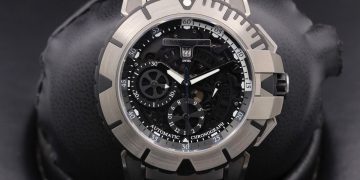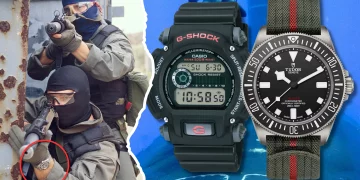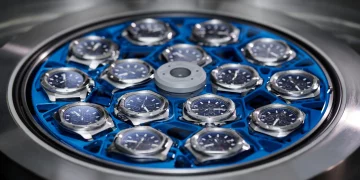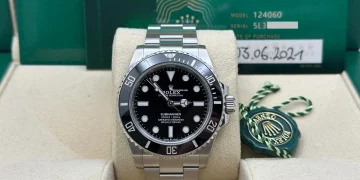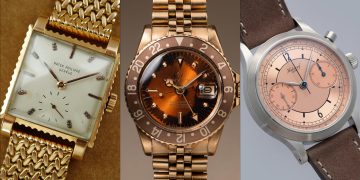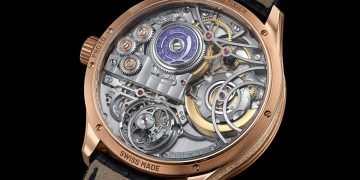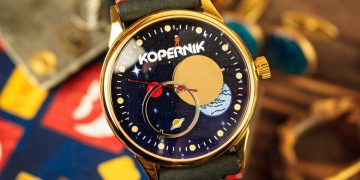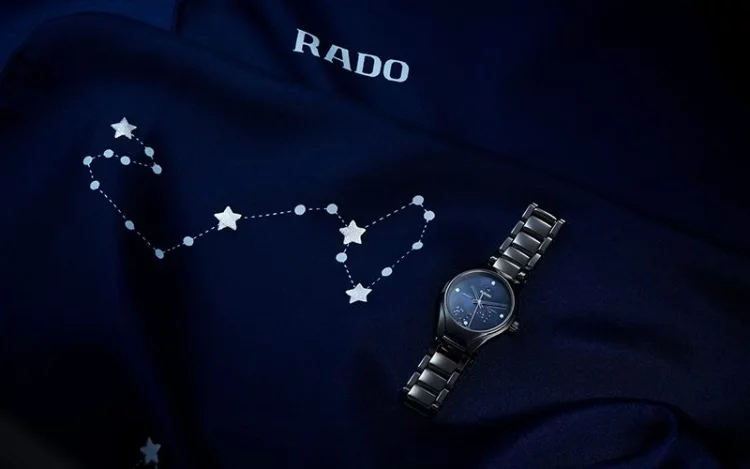Introduction
Watches are more than just timepieces; they are symbols of craftsmanship, status, and often, investment opportunities. Over the past few decades, limited edition watches have become a significant segment of the luxury watch market. These watches, often produced in small quantities, attract collectors, investors, and enthusiasts who are drawn to their exclusivity and potential for value appreciation.
In this article, we will explore whether limited edition watches are truly worth investing in. We’ll examine the factors that make these timepieces valuable, the risks involved, and the market dynamics that influence their potential for future returns. By looking at notable examples, trends, and insights from industry experts, we aim to provide a comprehensive understanding of this growing segment of the luxury watch market.
1. Understanding Limited Edition Watches
1.1 What Defines a Limited Edition Watch?
A limited edition watch is a timepiece produced in a restricted quantity, often with a specific design, feature, or unique element that differentiates it from regular models. These editions are typically marketed to collectors and enthusiasts who value rarity and exclusivity. The scarcity of the piece, combined with its special features, is often what drives demand.
- Edition Size: The number of units produced is the defining factor in what constitutes a “limited edition.” For example, a watch brand might release only 50, 100, or 500 units of a particular model.
- Exclusive Features: Limited edition models often have special dial designs, engraving, or innovative features that make them stand out from the standard versions of the same model.
- Historical Significance: Some limited editions are tied to significant events, anniversaries, or collaborations, which can further add to their appeal.
1.2 Popular Brands and Models of Limited Edition Watches
Some of the most coveted limited edition watches come from renowned luxury brands such as Rolex, Patek Philippe, Omega, and Audemars Piguet. These watches often have historical importance, commemorate significant moments in the brand’s history, or feature collaborations with celebrities or notable figures.
- Rolex Submariner “Hulk”: A special edition with a green dial and bezel, this model has gained significant demand in the secondary market.
- Patek Philippe Grand Complications: Patek’s limited editions, especially those with intricate complications like perpetual calendars or minute repeaters, are highly sought after by collectors.
2. Factors That Affect the Value of Limited Edition Watches
2.1 Rarity and Exclusivity
The scarcity of a limited edition watch is one of the key factors that drive its appeal. The fewer the units, the higher the demand from collectors. However, simply being limited edition does not automatically guarantee value appreciation. The true rarity is determined by how sought after the model becomes in the market.
- Demand vs. Supply: In many cases, the rarity of the piece creates a demand-supply imbalance that increases the value. Watches from brands like Rolex or Omega, which are often overproduced to meet mass market demand, can still create a sense of exclusivity through their limited editions.
- Historical Context: Some limited edition watches commemorate milestones, such as anniversaries or notable events. These models can become highly collectible over time as they symbolize a particular moment in the brand’s history.
2.2 Brand Reputation and Heritage
The reputation of the watch brand plays a crucial role in determining the potential for investment returns. Established brands with a history of high-quality craftsmanship and design, such as Patek Philippe and Vacheron Constantin, are often seen as safer investment options due to their long-standing tradition in the watchmaking industry.
- Longevity and Consistency: Brands that have been producing high-quality timepieces for decades and have built a strong following tend to see their limited edition watches retain or increase in value over time.
- Brand Loyalty: Many collectors are deeply loyal to specific brands and are willing to pay a premium for limited edition models that carry the name and reputation of their favorite watchmaker.
2.3 Special Features and Innovations
Many limited edition watches feature innovative designs or complications that set them apart from regular models. Whether it’s a groundbreaking movement, a limited-use material, or a design collaboration with a famous artist, these special features add value.
- Innovative Movements: Limited edition watches with unique movements, such as the Audemars Piguet Royal Oak Concept or Jaeger-LeCoultre Master Ultra Thin, can become highly valuable due to the rarity and complexity of the movement.
- Material Usage: Watchmakers that incorporate rare materials such as meteorite dials, ceramic, or precious metals in their limited editions often see the value of the piece increase.

3. Market Trends and Investment Potential
3.1 Secondary Market and Resale Value
One of the key reasons why limited edition watches are seen as potential investments is the opportunity for resale. The secondary market for luxury watches has grown significantly in recent years, with platforms like Chrono24, WatchBox, and Hodinkee catering to the buying and selling of high-end timepieces.
- Resale Value: Watches from established brands, particularly those that are limited edition, often see significant price increases on the secondary market. This is particularly true for models that have become iconic or are tied to specific events or celebrities.
- Timing of Sale: Just like any other investment, the timing of when you sell your limited edition watch plays a role in its return. Some watches appreciate quickly in the first few years, while others take decades to reach their peak value.
3.2 Historical Examples of Limited Edition Watches as Investments
There are several examples of limited edition watches that have appreciated substantially over time. For instance, the Rolex Daytona Paul Newman is a prime example of a limited edition model whose value has skyrocketed in recent years due to its rarity and desirability among collectors.
- The “Paul Newman” Daytona: In 2017, a Rolex Daytona once owned by actor Paul Newman sold for $17.8 million at auction, far exceeding its initial retail value. This shows that the right combination of history, rarity, and brand cachet can result in massive financial gains.
4. Risks of Investing in Limited Edition Watches
4.1 Market Volatility and Trends
The market for luxury watches is influenced by trends, making it somewhat volatile. While limited edition watches can be lucrative, they are not immune to the broader market dynamics. For example, if a specific brand’s popularity wanes or if a model does not gain traction, it could affect the resale value.
- Fluctuating Demand: Limited edition watches, especially those tied to trends or specific events, might experience a surge in demand initially, but if interest wanes, prices could drop.
- Counterfeit Watches: The rise of counterfeit watches and replica models also poses a risk to investors, as counterfeit watches are often passed off as genuine limited editions.
4.2 Depreciation of Value
Not all limited edition watches will appreciate in value. Some may experience depreciation, particularly if the market becomes oversaturated with similar models or if the demand simply does not live up to expectations.
- Oversaturation: Some brands, in an attempt to cash in on the limited edition craze, may release too many models, which could reduce the exclusivity of the pieces and lower their value.
- Brand Decline: If a brand experiences a significant drop in reputation or its market share declines, the value of its limited edition pieces may also fall.
5. How to Identify a Valuable Limited Edition Watch
5.1 Provenance and Documentation
The provenance of a limited edition watch is one of the most important factors in determining its value. Watches with a verified history, complete with original documentation, are more likely to retain or increase their value.
- Original Packaging and Papers: Watches with their original box, papers, and certificates are more valuable, as they are seen as complete and authentic.
- Celebrity Ownership: A watch that has been owned by a famous individual or has been associated with a major event often commands a premium price.
5.2 Condition and Maintenance
The condition of the watch plays a crucial role in determining its investment value. Watches that have been well-maintained, serviced regularly, and kept in pristine condition are far more likely to appreciate in value than those that show signs of wear and tear.
- Proper Care: Ensuring that the watch is regularly serviced by authorized professionals and kept in a protective environment can help preserve its condition and value.
- Customization: Be cautious about modifying or customizing limited edition watches, as this can negatively impact their resale value.
6. Conclusion
Limited edition watches can indeed be a sound investment, but like any form of investing, there are risks involved. The scarcity, brand reputation, historical context, and special features of the watch all contribute to its potential for appreciation in value. However, market trends, demand fluctuations, and brand dynamics must be carefully considered before committing to a limited edition piece.
For collectors and investors, limited edition watches provide an opportunity to combine a passion for horology with financial gain. With proper research, an understanding of the market, and a bit of luck, investing in limited edition watches can prove to be a rewarding venture.



